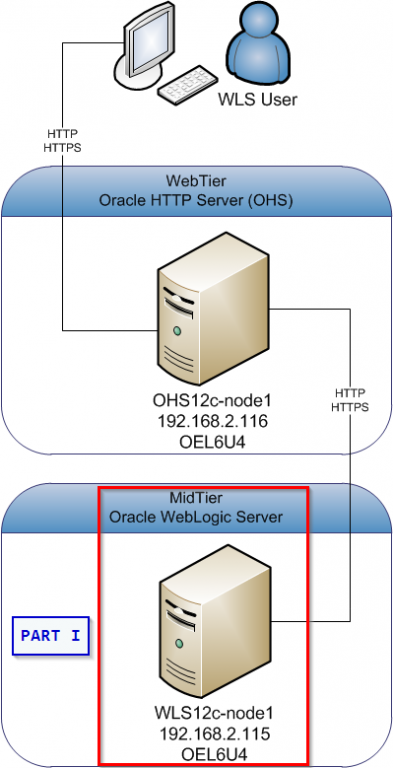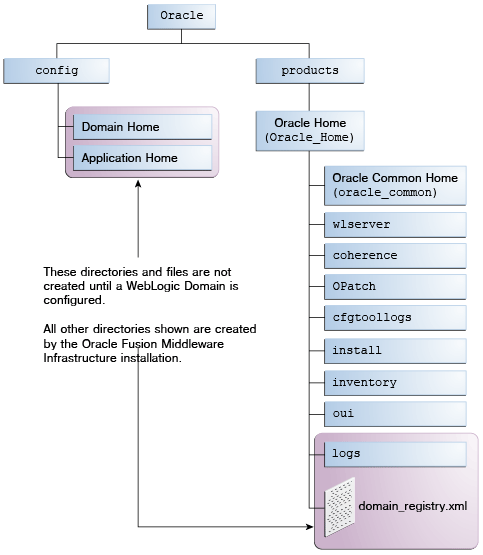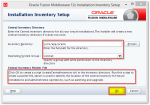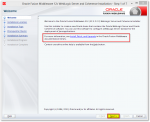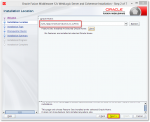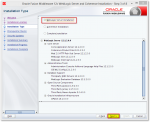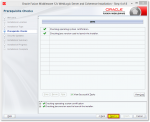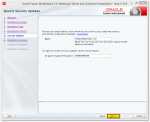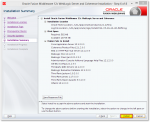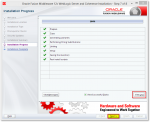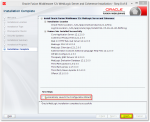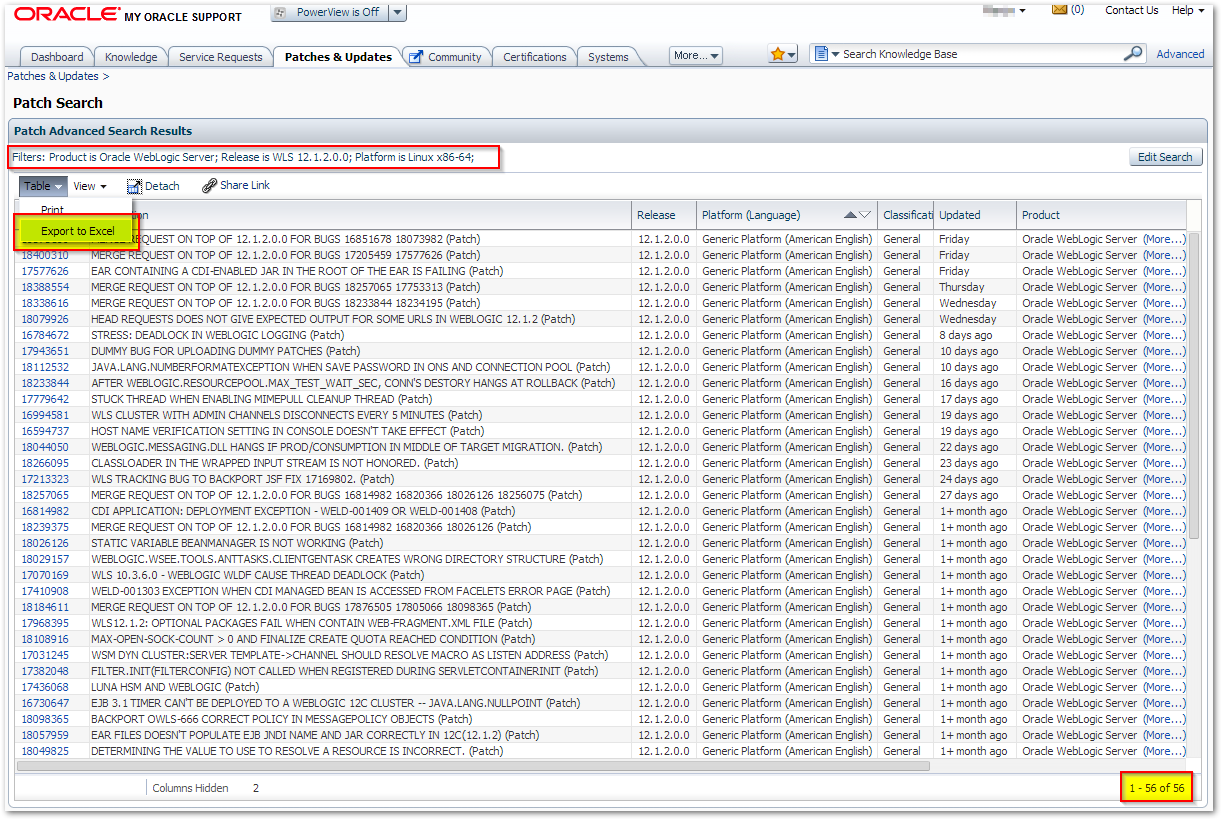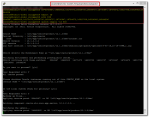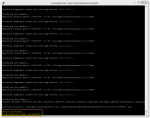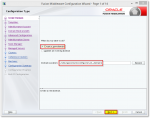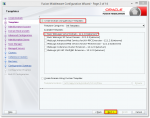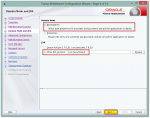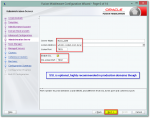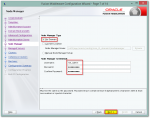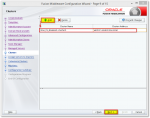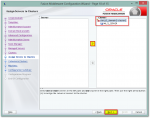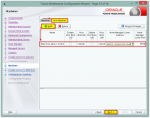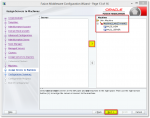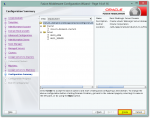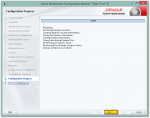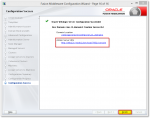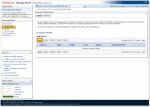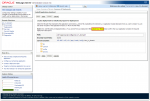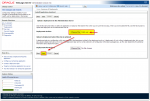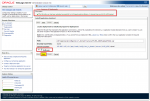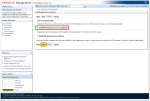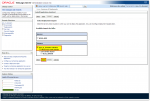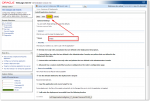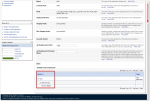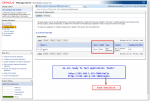Installing Oracle WebLogic Server 12c and Oracle HTTP Server Part I
 Oracle WebLogic Server 12c is one of the industry’s best application server for building and deploying enterprise Java EE applications. It’s a core component of Oracle Fusion Middleware portfolio and an engine powering Oracle products. Oracle WebLogic Server 12c Release 2 (12.1.2) has been released in July, 2013.
Oracle WebLogic Server 12c is one of the industry’s best application server for building and deploying enterprise Java EE applications. It’s a core component of Oracle Fusion Middleware portfolio and an engine powering Oracle products. Oracle WebLogic Server 12c Release 2 (12.1.2) has been released in July, 2013.
In This demo/tutorial we will cover installation of Oracle Weblogic Server 12c and Oracle HTTP Server 12c (OHS) on Oracle Linux Server 6. This is one node cluster simulation.
This tutorial is for educational purposes only.
Deployment plan:
- Configuring Linux servers for WLS and OHS
- Installing the JDK and setting JAVA_HOME environment variable.
- Installing WebLogic Server 12c software
- Patching WebLogic with OPatch
- Creating a WebLogic domain
- Starting WebLogic domain
- Installing and configuring Oracle HTTP Server (OHS) in Part II
Prerequisites:
- Two virtual Oracle Linux 6 servers have been cloned from a seed “OL6U4_SEED”. New virtual machine names: WLS12c-node1, OHS12c-node1:
- Download Oracle software from Oracle technology Network:
- Oracle WebLogic Server 12c (12.1.2) – Download: Generic (880 MB)
- Oracle HTTP Server 12.1.2 – Download: Linux x86-64(64-bit) (495MB)
- Java SE Development Kit – Download: jdk-7u51-linux-x64.rpm. WebLogic 12c supports: JRockit and Hotspot JDK 6 and JDK 7. Our Oracle Linux comes with Java 7 we weill upgrade to the latest version.
1. Configuring Linux servers for WebTier and MidTier – Part I, MidTier
- Power up virtual machine and connect to the server (using putty)
TIP: To power up virtual machine you may use VirtualBox GUI or the following command;
user@host:~$ VBoxManage startvm <VM_NAME> --type headless user@host:~$ VBoxManage startvm WLS12c-node1 --type headless user@host:~$ VBoxManage startvm OHS12c-node1 --type headless
NOTE: Do not boot up both servers at the same time – Our servers have seed’s IP (192.168.2.130) and hostname (demo) settings. We have to alter settings one after another to avoid IP conflicts within the same network.
Alter network configuration on both Linux servers
Altering network configuration and hostname in Oracle Linux 6 describes steps to alter network settings on Oracle Linux 6 server after clone to new virtualbox machine..
- MidTier – WebLogic server example config
#/etc/sysconfig/network HOSTNAME=wls12c-node1 #/etc/sysconfig/network-scripts/ifcfg-eth0 IPADDR=192.168.2.115 #/etc/hosts 127.0.0.1 localhost.localdomain localhost 192.168.2.115 wls12c-node1.zion.local wls12c-node1 192.168.2.116 ohs12c-node1.zion.local ohs12c-node1
- WebTier – OHS server example config
#/etc/sysconfig/network HOSTNAME=ohs12c-node1 #/etc/sysconfig/network-scripts/ifcfg-eth0 IPADDR=192.168.2.116 #/etc/hosts 127.0.0.1 localhost.localdomain localhost 192.168.2.115 wls12c-node1.zion.local wls12c-node1 192.168.2.116 ohs12c-node1.zion.local ohs12c-node1
Reboot both servers to apply changes.
2. Installing the JDK and setting environment’s variables.
- Login to Linux server wls12c-node1 and switch to “root” account. Upload jdk-7uXX-linux-x64.rpm on the server to /tmp directory and run the installer.
[root@wls12c-node1 tmp]# rpm -Uvh jdk-7u51-linux-x64.rpm
Preparing... ########################################### [100%]
1:jdk warning: /etc/init.d/jexec saved as /etc/init.d/jexec.rpmsave
########################################### [100%]
Unpacking JAR files...
rt.jar...
jsse.jar...
charsets.jar...
tools.jar...
localedata.jar...
jfxrt.jar...
[root@wls12c-node1 tmp]#
- java has been installed in the following directory:
[root@wls12c-node1 tmp]# ls -la /usr/java/ total 12 drwxr-xr-x. 3 root root 4096 Mar 15 17:14 . drwxr-xr-x. 14 root root 4096 Dec 19 04:27 .. lrwxrwxrwx. 1 root root 16 Mar 15 15:59 default -> /usr/java/latest drwxr-xr-x. 8 root root 4096 Mar 15 17:14 jdk1.7.0_51 lrwxrwxrwx. 1 root root 21 Mar 15 17:14 latest -> /usr/java/jdk1.7.0_51 #JAVA_HOME=/usr/java/default
- We are running WebLogic on a Linux virtual machine. We have to tweak JAVA in order to avoid very long Admin Console load and starting JVMs. More info about this bug here.
Edit the file /usr/java/jdk1.7.0_51/lib/security/java.security and replace: securerandom.source=file:/dev/urandom with: securerandom.source=file:/dev/./urandom
- You might repeat above steps and install Java on a OHS host ohs12c-node1.
Oracle WebLogic Server Directory Structure
- We assume ORACLE_BASE=/u01/app/oracle
- ORACLE_HOME=/u01/app/oracle/product/12.1.2/fmw
- Switch to an oracle account and set environment variables: edit /home/oracle/.bash_profile
# User specific environment and startup programs
PATH=$PATH:$HOME/bin
export PATH
ORACLE_BASE=/u01/app/oracle
export ORACLE_BASE
ORACLE_HOME=${ORACLE_BASE}/product/12.1.2/fmw
export ORACLE_HOME
WLS_HOME=${ORACLE_HOME}/wlserver
export WLS_HOME
CLASSPATH=${WLS_HOME}/server/lib/weblogic.jar
export CLASSPATH
LD_LIBRARY_PATH=$ORACLE_HOME/lib
export LD_LIBRARY_PATH
DOMAIN_HOME=${ORACLE_BASE}/config/zion_t1_domain1
export DOMAIN_HOME
JAVA_HOME=/usr/java/default
export JAVA_HOME
PATH=$PATH:$HOME/bin:$JAVA_HOME/bin:$ORACLE_HOME/OPatch:
export PATH
- execute .bash_profile script to apply settings
[oracle@wls12c-node1 ~]$ cd /home/oracle [oracle@wls12c-node1 ~]$ . .bash_profile
3. Installing WebLogic Server 12c software
- Upload WebLogic installation package wls_121200.jar to /tmp directory on wls12c-node1 server
- Set cookie session and run the installer (Xming is running on a client desktop, if Windows)
[neo@wls12c-node1 ~]$ xauth list wls12c-node1.zion.local/unix:10 MIT-MAGIC-COOKIE-1 514eeafdf4151a2d25833456317ba04a [neo@wls12c-node1 ~]$ sudo su - oracle [sudo] password for neo: [oracle@wls12c-node1 ~]$ xauth add wls12c-node1.zion.local/unix:10 MIT-MAGIC-COOKIE-1 514eeafdf4151a2d25833456317ba04a [oracle@wls12c-node1 ~]$ export DISPLAY=localhost:10.0 #Run WebLogic Installer: [oracle@wls12c-node1 ~]$ java -jar /tmp/wls_121200.jar Extracting files................................................ Starting Oracle Universal Installer
4. Patching with OPatch
New Patching Features
For Oracle Fusion Middleware 12c (12.1.2), Smart Update is no longer supported. Instead, Oracle WebLogic Server users can use OPatch to apply patches for both Oracle WebLogic Server and for Oracle Fusion Middleware.
Smart Update is no longer included with WebLogic Server.
Patching with OPatch – OPatch is a Java-based utility that runs on all supported operating systems and requires installation of the Oracle Universal Installer. It is used to apply patches to Oracle software.
At the time of creation of this tutorial there were the following patches available for WebLogic Server 12.1.2 at Oracle Support:
You would have to download all patches and apply them using the OPatch utility. More here: Applying Multiple Patches Using the OPatch napply Command.
- Below example shows OPatch utility in action, applying multiple patches. OPatch will skip any patches from the given list, in case they have conflicts among themselves. Or you could exclude superseded patches in search filter.
5. Creating a WebLogic domain
We create a WebLogic domain: zion_t1_domain1. Within a domain we create admin server (WLS0_ADM) and one managed server (WLS1_SERVER) which is part of one node cluster zion_t1_domain1-cluster1. “t1″ indicates test environment of OTAP model.
[oracle@wls12c-node1 ~]$ cd /u01/app/oracle/product/12.1.2/fmw/wlserver/common/bin [oracle@wls12c-node1 bin]$ ./config.sh
WebLogic domain “zion_t1_domain1” has been created.
6. Starting WebLogic domain
- Login as regular user to wls12c-node1 server and switch oracle account.
- start Node Manager running startNodeManager.sh script
- start weblogic domain running startWeblogic.sh script
[neo@wls12c-node1 ~]$ sudo su - oracle #Start NodeManager [oracle@wls12c-node1 ~] nohup $DOMAIN_HOME/bin/startNodeManager.sh > /dev/null 2>&1 & #Start weblogic server [oracle@wls12c-node1 ~]$ nohup $DOMAIN_HOME/startWebLogic.sh > /dev/null 2>&1 &
- You might check WLS0_ADM log file for details
#Check admin log [oracle@wls12c-node1 ~]$ tail -f $DOMAIN_HOME/servers/WLS0_ADM/logs/WLS0_ADM.log
- Login to WebLogic Server Administration Console 12c
- http:/<IPaddress>:7001/console
- https:/<IPaddress>:7002/console
- Start managed server WLS1_SERVER – in Admin Console
- Deploying sample application code to WebLogic managed server.
In this example we will deploy and test simple application (Hello.war), to a managed server WLS1_SERVER. Next, we will connect to a sample application over http and https URLs in order to test none SSL and SSL connectivity.
Download and UNZIP sample application: Hello.zip –> after unzipping you will get Hello.war file ready for deployment.
7. Installing and configuring Oracle HTTP Server (OHS)
In Part II of this article we cover Oracle HTTP Server 12c installation and configuration >>
References:
- Oracle WebLogic Server 12c documentation
- Oracle HTTP Server documentation
- Oracle WebLogic Server 12c Launch Q&A
